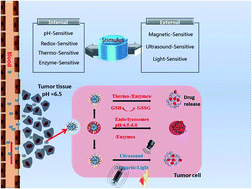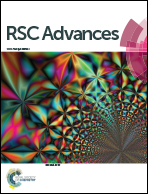Multifunctional mesoporous silica nanocarriers for stimuli-responsive target delivery of anticancer drugs
Abstract
With the rapid development of nanotechnology, mesoporous silica nanoparticles (MSNs), as a new type of inorganic nanomaterial, have been widely used in biomedical applications especially in drug delivery systems owing to their unique physical–chemical properties such as tunable particle/pore size, high surface area and pore volume, easy surface modification, remarkable stability and biocompatibility, and high drug loading efficiency. By modifying the outer surface of MSNs with various functional groups such as polymers, co-polymers, nanoparticles, quantum dots, supermolecules, ligands, or/and using a combination with other nanomaterials, stimuli-responsive and active targeting nanosystems can be designed for targeted delivery of anticancer drugs. In this review, the recent advances in stimuli-responsive strategies involving pH-sensitive, redox-sensitive, thermo-sensitive, enzyme-sensitive, light-sensitive, magnetic-sensitive, ultrasound-sensitive, and active targeting approaches involving vascular targeting, tumor cell targeting, nuclear targeting and multistage targeting are discussed in detail. The remaining challenges and the possible future directions are also suggested.

- This article is part of the themed collection: Drug delivery

 Please wait while we load your content...
Please wait while we load your content...